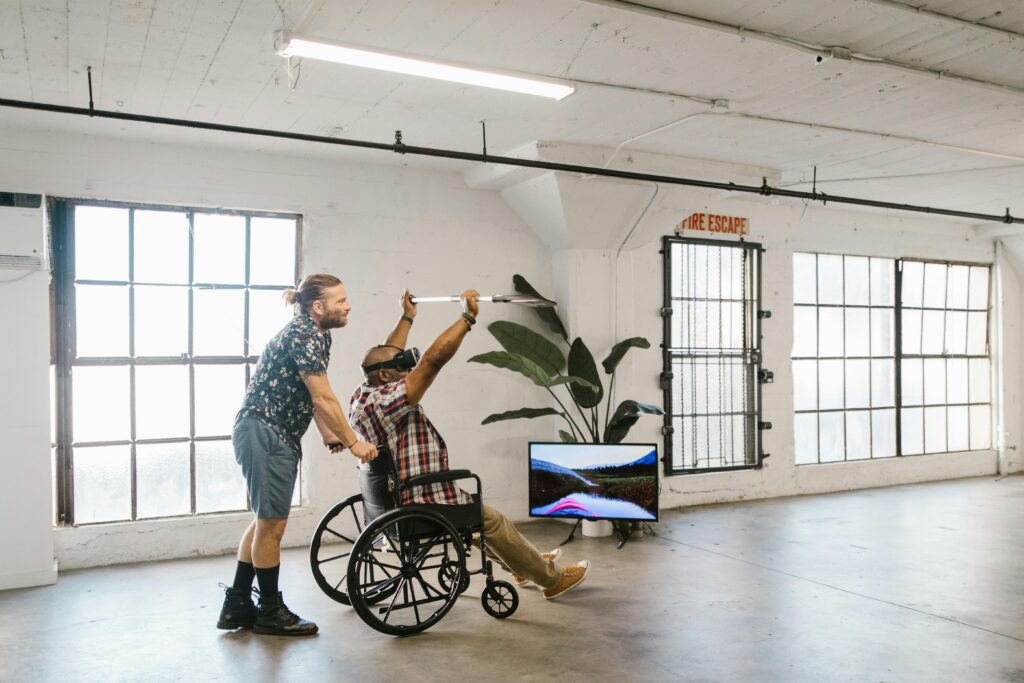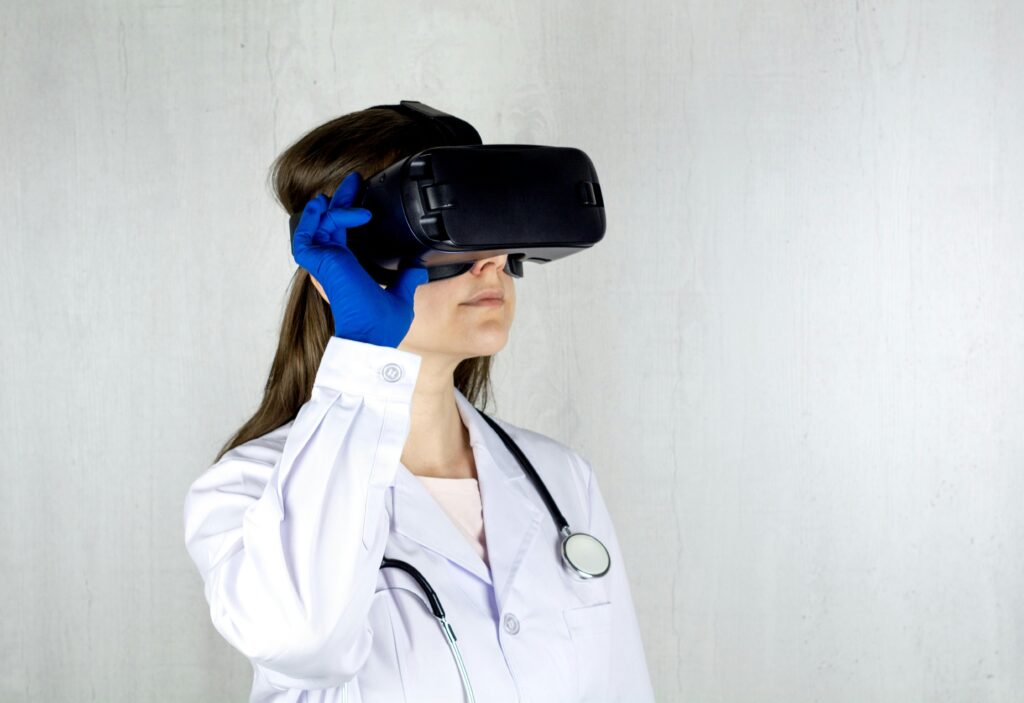Virtual Reality (VR) technology, once relegated to the realm of video games and entertainment, is now making significant strides in healthcare. Its immersive, interactive capabilities are transforming the way healthcare professionals diagnose, treat, and manage diseases, and enhancing patient experiences in a way that was previously unimaginable. From revolutionizing surgical training to helping patients cope with mental health disorders, VR is poised to shape the future of healthcare in profound ways.
The Rise of Virtual Reality in Healthcare
Virtual reality, a computer-generated simulation that replicates real-world environments, has been around for decades, but only in recent years has its application in healthcare gained momentum. VR systems use specialized hardware, such as headsets, haptic feedback devices, and motion sensors, to create realistic, three-dimensional virtual environments that allow users to interact with and explore digital spaces in real time.
The healthcare industry has recognized the potential of VR to address long-standing challenges, from improving medical education to enhancing patient care. As the technology evolves and becomes more accessible, VR’s applications are expanding across diverse areas, including surgery, therapy, rehabilitation, training, and pain management.
Revolutionizing Medical Education and Training

- One of the most transformative impacts of VR in healthcare is its ability to revolutionize medical education and training. Traditionally, medical students and professionals have relied on textbooks, cadavers, and simulations to learn complex procedures. However, VR offers a more dynamic, immersive, and safe learning environment.
- With VR, students can step into a 3D world where they can interact with virtual patients and practice intricate surgeries without the risk of harming real individuals. For instance, VR allows aspiring surgeons to simulate complex procedures such as brain surgery, organ transplants, and laparoscopic surgeries. This practice not only builds skill but also increases confidence in performing real-life procedures. Additionally, VR technology can create realistic scenarios where medical professionals can train for emergencies, learning to handle high-pressure situations like heart attacks or mass casualty events.
- Another advantage of VR in education is the ability to provide training to a wider range of learners. Students from remote or under-resourced regions can access virtual healthcare environments, bridging the gap in medical education worldwide.
Transforming Surgical Precision and Planning with Virtual Reality
Surgical planning and precision are critical in minimizing risks and improving patient outcomes. VR technology has begun to transform these aspects by enabling surgeons to visualize the patient’s anatomy in 3D before performing a procedure. Through medical imaging data, such as CT scans or MRIs, VR systems can create accurate virtual representations of a patient’s body. Surgeons can explore and manipulate these digital models, studying the affected areas and planning procedures with greater accuracy.
This approach not only improves the surgeon’s understanding of the patient’s condition but also reduces the likelihood of complications during surgery. It is particularly valuable in complex or high-risk surgeries, such as those involving tumors, organ transplants, or spinal injuries. By practicing in a virtual environment, surgeons can refine their techniques, making them more adept at performing delicate procedures.
Enhancing Pain Management and Patient Comfort
Pain management is one of the most challenging aspects of healthcare, and VR is emerging as an innovative tool in this regard. Research has shown that VR can be an effective method of pain relief, especially for patients undergoing painful procedures, such as burn treatment, chemotherapy, or physical therapy.
The principle behind VR’s effectiveness in pain management lies in its ability to distract the brain from the pain signals it is receiving. When a patient is immersed in a calming virtual environment, such as a beach or a forest, their focus shifts away from the pain and onto the virtual world. This form of therapeutic distraction is not only enjoyable but can significantly reduce pain perception.
- For example, during wound care for burn victims, VR can help patients focus on a soothing digital landscape, which has been shown to reduce the intensity of pain they feel. This method reduces the need for opioids and other pain medications, offering a drug-free alternative that is safer for patients.
Also Read:- https://lifescienceinsights360.com/biotech/chemo-immunotherapy-for-lung-cancer-with-multi-omic-profiling/
Therapeutic Applications in Mental Health

care.
Virtual reality is also making waves in mental health care. It has proven to be a powerful tool for treating a range of psychological conditions, including anxiety, PTSD (Post-Traumatic Stress Disorder), depression, and phobias.
- One of the most significant uses of VR in mental health is in exposure therapy, a psychological treatment that helps patients confront their fears in a controlled and safe environment.
- For instance, patients with social anxiety can practice interacting in social situations, while those with PTSD can gradually relive traumatic experiences in a virtual world, helping them process their trauma with the guidance of a therapist.
- A notable application is VR therapy for patients with phobias. For example, individuals with a fear of flying can use VR simulations to experience a flight in a controlled, safe environment. Gradually, they can confront and diminish their fear through repeated exposure, with the comfort of knowing that the scenario is not real.
Moreover, VR has been used to treat depression by offering immersive environments that help individuals overcome feelings of isolation. Through VR, patients can engage in positive, stimulating activities that enhance their mood and provide a sense of connection to the world around them.
Accelerating Rehabilitation and Physical Therapy
Rehabilitation and physical therapy are often slow and painful processes that require patients to remain committed and motivated. VR has the potential to make these treatments more engaging, effective, and even enjoyable.
In physical rehabilitation, VR can simulate real-life movements and environments, encouraging patients to perform exercises they may find too difficult or boring. For example, a stroke patient can engage in virtual games that mimic real-world tasks, such as reaching for objects or walking on different surfaces. These virtual exercises provide real-time feedback, which helps patients track their progress and stay motivated.
In addition, VR can be used for neurorehabilitation, assisting patients with cognitive impairments. People who have suffered from brain injuries or neurological disorders, such as Alzheimer’s, can use VR-based cognitive training programs to improve memory, attention, and motor skills in a non-threatening way.
The Future of Virtual Reality in Healthcare

As technology continues to evolve, the potential of VR in healthcare will only expand. Innovations such as mixed reality (MR) and augmented reality (AR) are already beginning to merge with VR, enhancing its capabilities. For example, AR overlays digital information on the real world, allowing surgeons to receive real-time data about a patient’s anatomy during surgery.
Furthermore, advances in AI and machine learning will improve the ability of VR systems to adapt to individual patients, providing tailored therapies, training, and pain management solutions.
As VR becomes more integrated into healthcare systems, the key will be ensuring that the technology remains user-friendly, accessible, and affordable for both patients and healthcare providers. With continued research and investment, VR has the potential to radically transform healthcare delivery, making treatments more personalized, efficient, and effective.
Conclusion
Virtual reality is not just a futuristic concept; it is a present-day tool that is shaping the future of healthcare in profound ways. From enhancing medical education to providing innovative therapies and improving patient outcomes, VR is revolutionizing the way we approach healthcare. As the technology continues to develop, its impact will only grow, bringing new opportunities for better patient care, improved training, and more effective treatments across the globe. Virtual reality is more than just a tool for entertainment—it’s a game-changer for healthcare.





